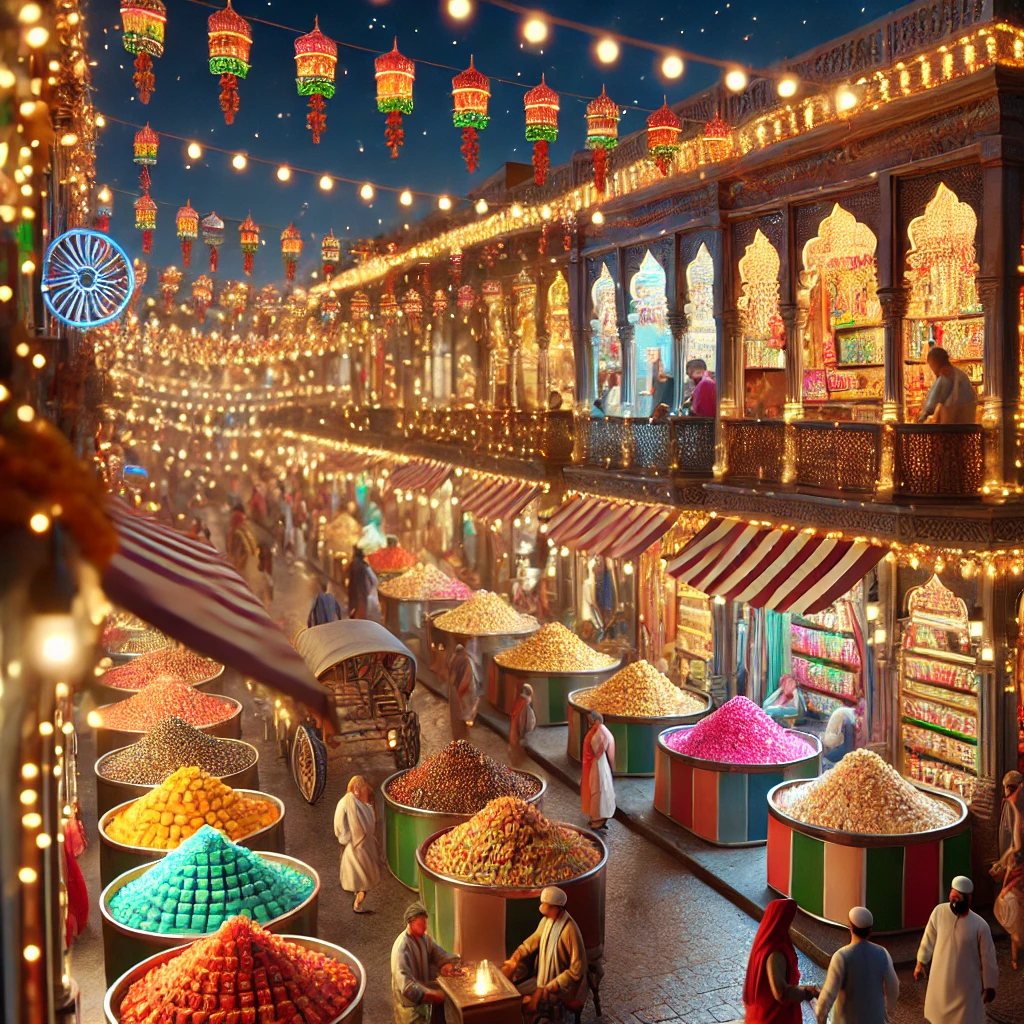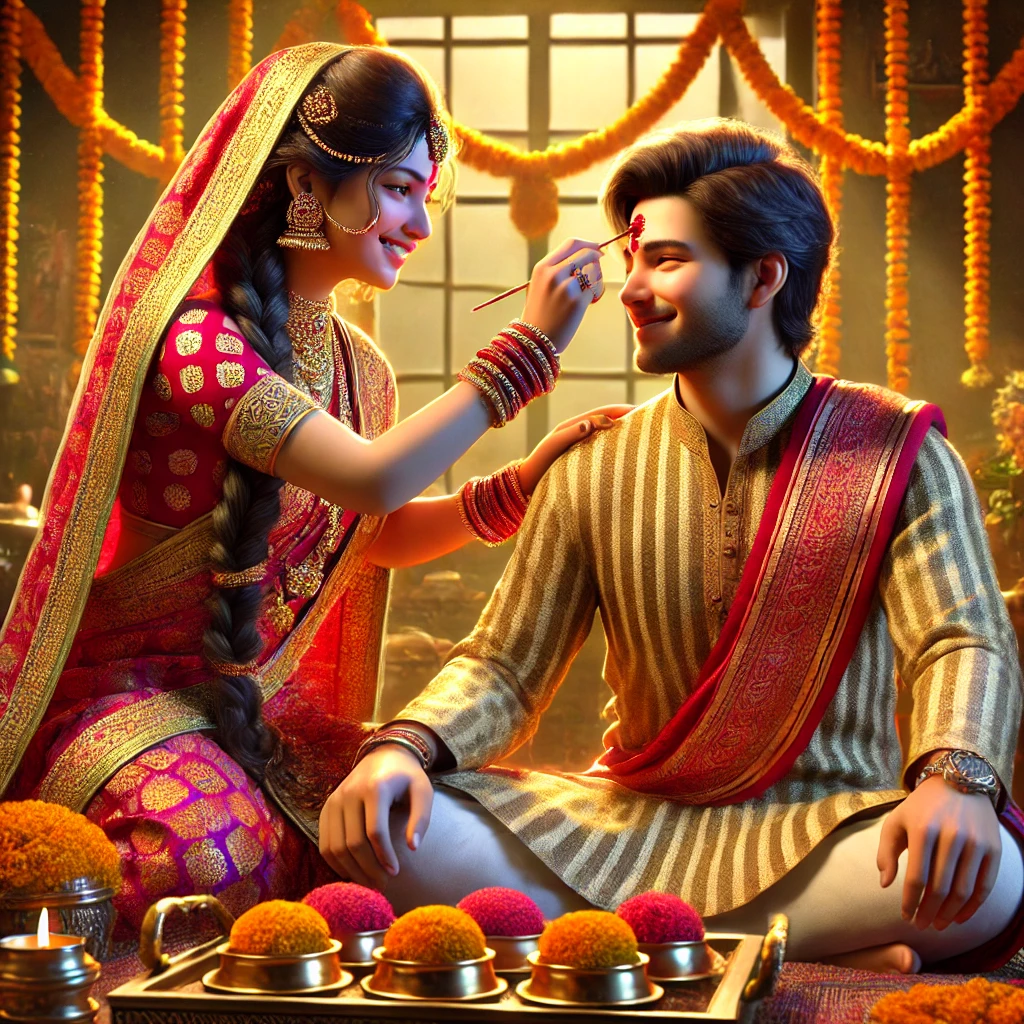Bhai Dooj, is a Hindu festival celebrated by Brothers and Sisters across India and in many parts of the world. Falling on the last day of the five-day Diwali festival, it symbolizes the love and protection between brothers and sisters. This day holds immense cultural and emotional significance, marking a powerful moment for family bonds. Celebrated eagerly by families, it is a day dedicated to the essence of sibling love.
Legend of Bhai Dooj
It is rooted in Hindu mythology, and several legends are associated with its origins. The most popular story revolves around Lord Yama, the god of death, and his sister, Yamuna. According to legend, Yamuna deeply loved her brother and wished for him to visit her. After several requests, Yama finally visited her on the second day after the new moon. Yamuna welcomed him with immense love, performed rituals, and applied a ceremonial tilak (mark) on his forehead, signifying protection and blessings. Touched by his sister’s devotion, Yama granted her a boon: any brother who receives a tilak from his sister on this day of Bhai Dooj will be blessed with a long and prosperous life.

Another story relates to Lord Krishna and his sister, Subhadra. After Krishna defeated the demon Narakasura, he visited Subhadra, who welcomed him with sweets, flowers, and a tilak on his forehead. This tradition of applying tilak as a gesture of blessing and protection thus became associated with Bhai Dooj.
The Celebrations in India
In India, it is celebrated with various customs and rituals across different states, each adding its unique touch to the festival.
- Traditional Rituals: On this day, sisters invite their brothers to their homes. The sisters perform an aarti, a ritual of waving a lamp in front of their brothers, signifying protection and blessings. They then apply a tilak of vermilion, rice grains, and sandalwood paste on their brothers’ foreheads. This mark symbolizes prosperity and well-being. In return, brothers offer gifts to their sisters as a token of love and promise to protect them.
- Feasts and Sweets: No Indian festival is complete without delicious food. Families prepare a variety of dishes, including sweets much liked by the brothers including laddoos, barfis, and kheer. Sisters often prepare their brothers’ favorite dishes as a way of showing love, affection and care.
- Regional Variations: In Maharashtra, this festival is called “Bhau Beej.” Brothers and sisters gather for a meal, and the sister performs aarti for her brother, praying for his longevity. In West Bengal, Bhai Dooj is known as “Bhai Phonta,” where sisters pray for their brothers’ protection and well-being. The festivities are grand, with elaborate meals and gifts exchanged. In Uttar Pradesh and Bihar, sisters perform a ritual in which they draw an outline of their brothers using rice flour and pray for their happiness.
Celebrations Abroad:
As Indians have migrated globally, they’ve taken their cultural festivals with them over there. This event is now celebrated with much enthusiasm in countries like the United States, the United Kingdom, Canada, and Australia, where large Indian communities reside. The celebration has also spread awareness of Indian culture among locals and has become an occasion for diaspora families to connect with their roots.
- Adapting Traditions: In foreign countries, sisters and brothers who cannot meet in person often connect through video calls or send gifts by mail. For siblings living far apart, modern technology bridges the distance, allowing them to perform rituals virtually. Many also participate in local Indian cultural events that organize Diwali and Bhai Dooj gatherings, complete with food, music, and traditional rituals.
- Community Celebrations: Some Indian cultural associations and temples abroad organize Bhai Dooj events, inviting families to come together and celebrate. This sense of community brings Indian traditions to life in a foreign land, helping younger generations understand the significance of these rituals.
- Gifts and Modern Touches: With the influence of Western culture, the concept of gifting has evolved. While traditional gifts like clothes, jewelry, and sweets are still exchanged, siblings also present each other with modern items like gadgets, gift cards, and luxury items. This blend of tradition and modernity keeps Bhai Dooj relevant for younger generations.
The Emotional Significance :
Beyond rituals, Bhai Dooj holds immense emotional significance. It’s a day when siblings express gratitude for each other’s presence in their lives. For sisters, the ritual of applying tilak is a way to bless their brothers, hoping they are protected from harm. For brothers, the festival is an opportunity to show appreciation and commit to their role as protectors.
It is especially meaningful for siblings who live apart due to work, studies, or marriage. The festival becomes a reason to reconnect and relive childhood memories. It’s a reminder of the love, shared moments, and silent promises that exist between brothers and sisters.
Changed way in Modern Times:
Today, Bhai Dooj has adapted to modern lifestyles while preserving its traditional essence. Social media platforms are filled with posts and photos of siblings celebrating together. E-commerce platforms see a spike in gift sales, and online delivery services ensure that sweets and gifts reach loved ones on time. cards, personalized gifts, and virtual greetings are popular, allowing siblings to celebrate even when they are miles apart.
In an era where people are often distanced from their families, this festivity reminds them of the joy and strength derived from sibling relationships. It is a celebration of love, protection, and shared bonds that transcend time and distance
Now it is more than just a festival; it is a celebration of one of the purest forms of love—between siblings. Whether in the bustling streets of India or the quieter neighbourhoods abroad, the essence of this festivity remains the same. It is a day that rekindles memories, strengthens relationships, and renews promises between brothers and sisters. The festival bridges the traditional and modern, ensuring that the love shared by siblings continues to thrive, irrespective of where they are in the world
This day holds immense cultural and emotional significance, marking a powerful moment for family connections. Celebrated eagerly by families, it is a day dedicated to the essence of sibling love.





